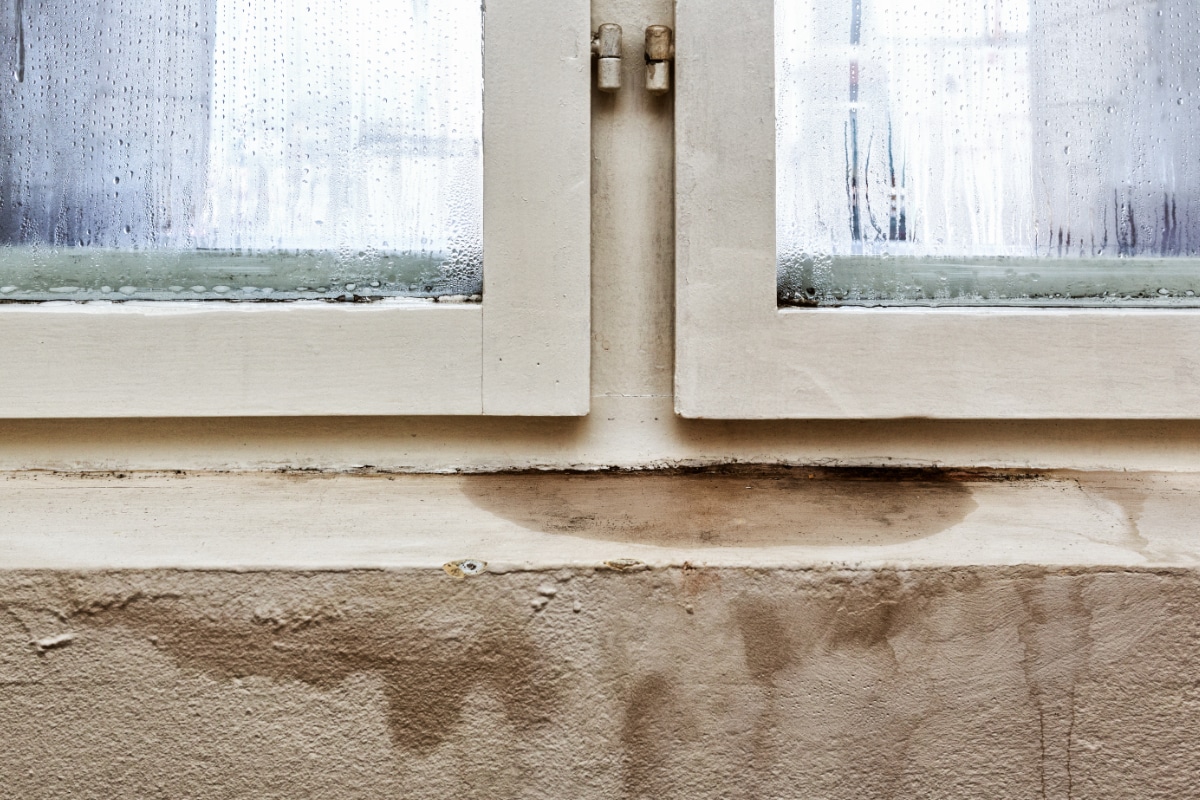Damp problems? Stop moisture thanks to damp wall treatment!
Moisture problems come in many forms. Its causes and consequences are often not immediately discernible, but it’s certain that over time it can cause serious health problems and damage to the house. On this website, you can find out more about the different types of moisture problems, their causes and consequences, and how to solve them.
How to recognise damp problems: solutions & prices
Often you are not sure if that one spot on your wall is really a moisture problem. Below, we have listed several common damp problems. Do you recognise any of them? Discover now a solution for every problem and ask an expert to solve it in order to prevent health problems.
1) Moisture on the bottom of walls
⇒ Rising damp
Moisture on the bottom of the walls is almost always caused by problems with the pipes below or behind said walls. In case of rising damp it’s ground water rising in the walls. You can solve this in one of these 2 ways: inject your walls or put in an entirely new damp-proof course.
Injecting your walls means that, after drilling holes in them, you have to squirt damp-proof gel into the walls.
» Price: from £ 90 per running meter – receive a tailor-made price offer
Adding an entirely new damp-proof course is a quite drastic but effective solution for rising damp. Here you create grooves in your walls in which you apply the new damp-proof course.
» Price: £ 90 – 140 per running meter – receive a tailor-made price offer

2) Moisture on the outer wall
⇒ Penetrating damp
If you have obvious damp spots on your outer wall (and if they run through to even the inner walls), then you’re dealing with penetrating damp. The reason why this moisture is seen through the facade, is because the wall cover has turned porous. That’s why it often occurs with older buildings. Penetrating damp can be dealt with in 2 ways: impregnate the walls or replace the facade coating.
Injecting walls can be done by applying an invisible damp-proof coating to your outer walls. This prevents the moisture from seeping through and creating damp spots.
» Price: £ 10 – 15 per m² – receive a tailor-made price offer
Placing new facade coating can solve penetrating damp when your front wall is in bad shape. Take the opportunity during the construction and immediately install insulation as well.
» Price facade coating with insulation: £ 90 – 130 per m² – receive a tailor-made price offer

3) Mold
⇒ Condensation
Condensate on the windows, mold in the bedroom, kitchen or bathroom… They are all signs of condensation. This problem is caused by too little ventilation. When you cook, or take a bath, lots of vapour is released, and if it cannot leave your house, it will condensate and form mold. Luckily there’s a simple solution: ventilate!
Mechanical ventilation prevents condensation and moisture and makes sure you live in a healthy environment.
» Price: from £ 1500 – receive a tailor-made price offer
Natural ventilation prevents moisture. You can simply open your doors and windows, or buy a ventilation grille that ventilates automatically.
» Price: from £ 20

4) Other moisture problems
Do you have a damp problem that cannot be explained with the above-mentioned causes, then there’s a big chance that there’s a leak in one of the pipes. For this, it is best to have a leak detection carried out by a damp expert.
Step-by-step: how do I treat a damp wall?
In order to find the necessary information more easily, you can use this step-by-step plan. It’s important to first know where the dap is coming from and which walls could be damp. Injecting wals haphazardly could result in unnecessary work and higher costs.
Step 1: find the cause of the damp in your walls
Like any problem, first you need to make the right diagnosis. You can keep pumping that leaky tyre, but if it’s punctured it will simply go flat again. It’s kind of the same with damp problems. By applying the wrong technique, you could cause loads of unnecessary work and the cost could be immense. So getting to the root of the problem is the first, crucial step in treating damp.
Discover all possible causes of damp walls.
Step 2: cause found? Look for the right treatment!
Once you’ve found the cause of your damp problems, you can start looking for the right solution. No two walls are the same, so sometimes you need to apply several techniques in order to achieve the best result. Some of the most frequently used techniques are injection, placing a damp-proof membrane and horizontal wall cutting.
Read more about damp treatment.
Step 3: Treating or injecting damp walls
Do you prefer doing it yourself or leaving it to an expert? Both options are perfectly viable, if you have the knowledge, preparation and the right tools at your disposal. But leaving the work to a damp specialist really pays off, as those professional tools cost quite a lot.
Contact experienced damp specialists here.
Damp problems not only occur in older buildings, but in newly built and thoroughly renovated houses as well. In order to prevent health problems and damage, it’s crucial to apply damp treatment as soon as possible.
